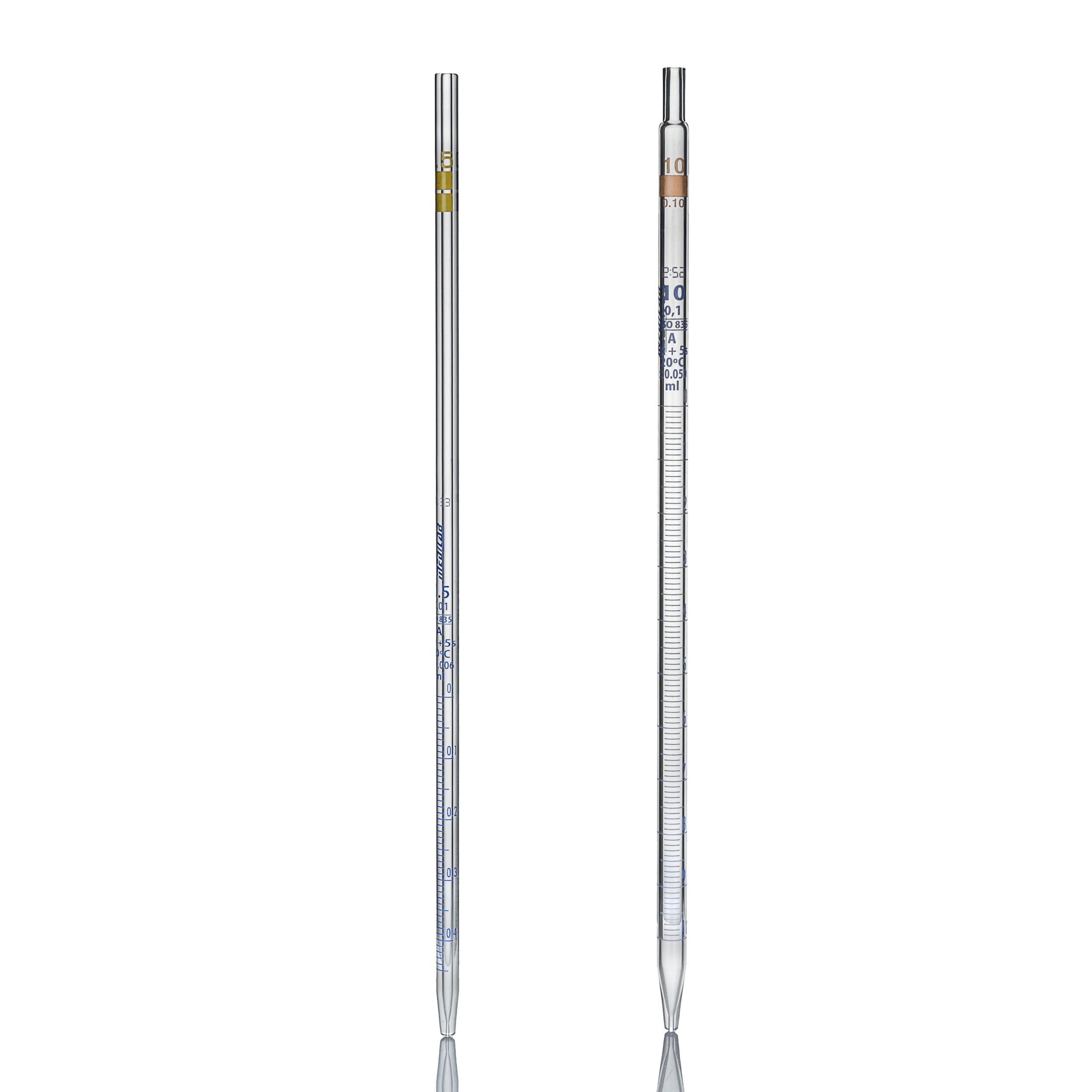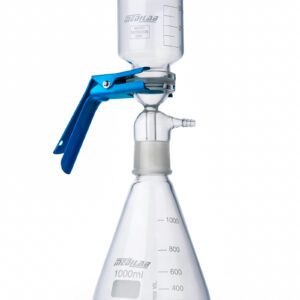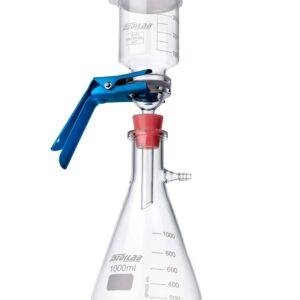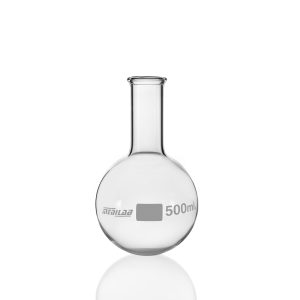Description
| Catalog No. | Capacity (ml). | Tolerance (±ml) | Pack of |
| 11258/3 | 0.5 | – | 5 |
| 11258/4 | 1.0 | 0.010 | 5 |
| 11258/5 | 2.0 | 0.020 | 5 |
| 11258/6 | 5.0. | 0.100 | 5 |
| 11258/7 | 10.0 | 0.100 | 5 |
| 11258/8 | 25.0 | 0.100 | 5 |
A to Z of Graduated Pipette
Pipette Graduated Mohr Type is a tube made of glass or plastic that is straight, and at one end it has a narrowing that is called a conical tip. The other end of the tube has a nozzle. They are calibrated in small divisions, allowing for varying volumes of liquid to be measured in units ranging anywhere from 0.1 to 25 milliliters (ml).
Because of its wide neck, the precision with which it can measure liquids is inferior to that of the graduated volumetric pipette. As a result, they are used in situations where a large number of solutions must be taken but the level of precision required is low. In a lab, they can be used to measure volume and move precise amount of liquid samples from one container to another.
The graduated pipettes can be divided into two distinct categories: the graduated Mohr pipette, also known as a subterminal pipette, and the serological pipette, also known as a terminal pipette. The Mohr pipette’s graduation stops before the tip of the tube, whereas the serological pipette’s graduation extends all the way to the end of the tube. This is the primary distinction between the two.
Features of a Graduated Pipette
The following are some of the most important characteristics of graduated pipettes:
- They can either be a graduated plastic pipette or a borosilicate glass pipette.
- There are lines running along the body of the tube that provide an indication of the total volume. These have numbers on them that represent the amount of liquid that is currently in the line.
- The graduated pipette can measure volumes from 0.1 to 25 ml. There is also a 1 ml graduated pipette and a 5 ml small graduated pipette. However, a 10ml graduated pipette is commonly used in laboratories.
- The specifications that indicate: its maximum volume are printed on the neck of the pipette; the size of their divisions, represented as 1/10 and 1/100; the calibration temperature; and a legend identified as TD or TC by the acronyms in English of “to deliver” (ex) or “to contain” (in), which mean to pour or empty, respectively. – The maximum volume of the pipette is printed on the neck of the pipette. The size of their divisions is represented as 1.
- Pipettes that measure very small volumes are able to provide a fairly accurate measurement of fluids, while pipettes that measure larger volumes are able to provide a measurement that is less critical.
Applications and Use of a Graduated Pipette
In most laboratories, particularly those dealing with chemistry, biology, or medicine, the use of graduated pipettes is required. The graduated scale on the side of this pipette can be used to accurately measure different amounts of liquid.
Knowledge of the instrument and consistent practice are required in order to use it in the correct manner. It is necessary to be aware of the proper way to hold the pipette. The best way is to take it by the upper third, between the thumb and the middle finger.
The difference in the level of the liquid that is found in the graduated pipette before and after it has been dispensed into the new container needs to be calculated by the user in order to determine the volume of the liquid that is dispensed. This can be done by comparing the two levels of liquid in the graduated pipette. It is essential that the meniscus be positioned so that it rests on the top of the graduation line in order to obtain reliable volume measurements. The meniscus is the lowest point of the bow made by the liquid in the pipette.
The graduations are numbered starting from 0 at the very top and going all the way up to the maximum number at the very bottom. For instance, if a person wanted 10 milliliters of a liquid and was using a 10 ml graduated pipette, then they would fill the pipette until the zero line at the top of the pipette was reached. This would be the correct amount. The user would release the suction aid so that the liquid would empty out of the pipette until the meniscus was sitting on the graduation label of 10. This would be done in order to dispense 10 milliliters.
Differences between Graduated Pipette and Volumetric Pipette
- The graduated pipette has a graduated scale, while the volumetric one has a capacity.
- You can measure the amount of different liquids using a graduated pipette based on the range written on its structure. In the case of the volumetric pipette, only a single value can be measured.
- The accuracy of a volumetric pipette is greater than that of a graduated pipette.
Differences between a Graduated Pipette and a Burette
The burette is a measuring instrument for liquid volume. It consists of a long glass cylinder that is open on the top with a stopcock on the bottom to prevent the liquid from escaping. It has a series of volumetric marks that allow the user to take only the amount of liquid or gas that is desired in a particular laboratory process.
The differences between the graduated pipette and the burette lie in the following main aspects:
- The graduated pipettes are only used to measure liquids, while the burettes measure liquids or gasses.
- When using a stopcock, the structure of the burette is different from that of the graduated pipette. This key allows a less precise release than that generated by the volumetric pipette.
- The burettes can contain liquids from 10 to 50 ml. In contrast, graduated pipettes admit lower quantities.
- In the case of the burette, measurements are made from top to bottom. Consequently, the difference between the initial and final volumes is equal to the total amount of the liquid or solution.
There are numerous considerations when stocking a lab with the necessary tools. In order to complete the task, you will need everything, including potentially pricey specialized equipment that can cost a lot. The graduated pipette is just one example of a MEDILAB product that can help you save money and time when setting up and running a laboratory with no compromise in quality standards.
The production of graduated pipettes in a variety of sizes and standards is one of MEDILAB’s primary activities. MEDILAB is one of the most prominent manufacturers in the industry, having its own In-house Calibration laboratory. One of their primary activities is manufacturing and calibration of volumetric glassware including Pipettes, volumetric flasks, Burette, Measuring Cylinders in a variety of sizes and ISO standards. ISO and DIN standards are used to make sure that MEDILAB’s volumetric glassware is as accurate as possible when it is being made and calibrated.







